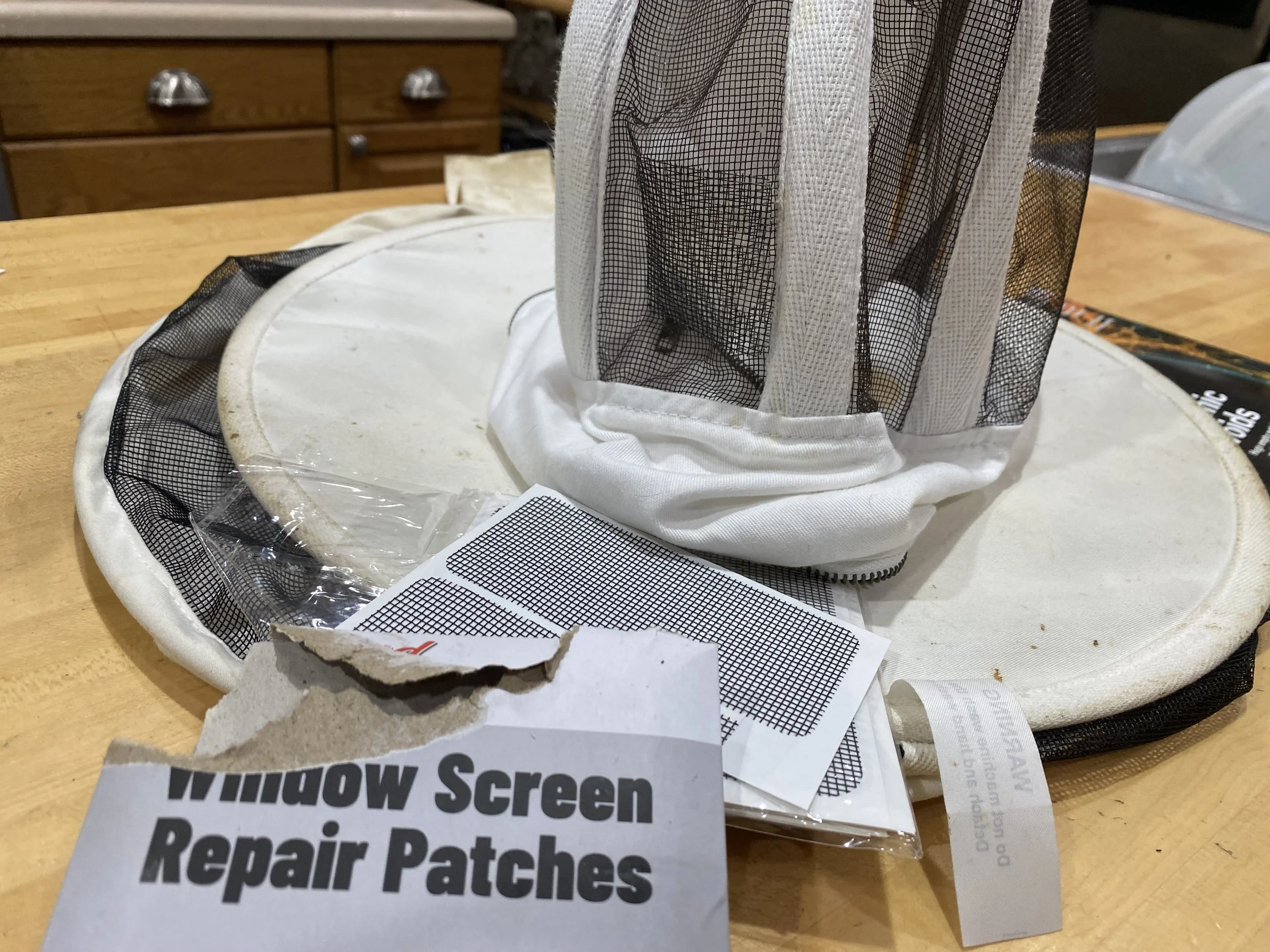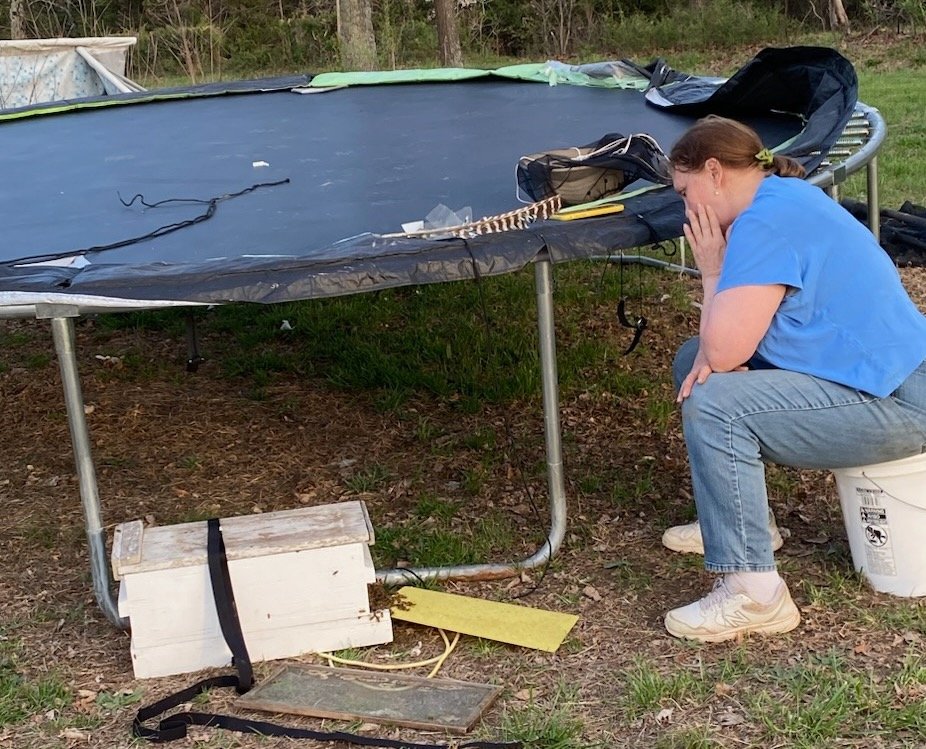Watering Bees
/Preparing one of my bird baths with twigs to give my bees a safe landing spot. (Photo by Charlotte Ekker Wiggins)
Watering Bees
It’s been getting record hot where I live. In addition to making sure my plants are watered, I concentrate on getting my pollinators, including honey bees, drinking water. Honey bees use water for a variety of things from air conditioning the hive to making food.
Now when I talk about providing bee water in beekeeping classes, usually someone will pipe up that they have a pond within so many miles of their hives. My question to them is, would you want to drive the 2 miles to water or would you rather have a handy watering hole nearby.
Bees are no different. It’s better to have water close by so they can easily access it versus spending extra energy for the water carriers to fly off and carry water back to the hive.
In my apiary, I have concrete bird baths situated within a few feet of my hives. That way bees have easy access to the water and don’t compete to get it. I also prepare the bird baths with sticks and rocks so the bees have a safe spot to land. Leaves falling in? Even better, the leaves and other garden debris offer amino acids that are critical for bee health.
In addition, those bird baths are now favorite watering holes for a variety of pollinators including butterflies and moths. They also use sticks and rocks for safe landing spots.
Not everyone has the room to add bird baths so there’s an excellent alternative: Boardman feeders, the very same we beekeepers use to feed bees sugar water.
Boardman feeders with glass jars on top of frames make handy inside water drinking stations. (Photo by Charlotte Ekker Wiggins)
Clean out the glass jars and refill with water. Then turn over for gravity to remove the air and place in the Boardman feeder over the bee frames. This way bees have access to water without having to leave the hive and no one can disturb it.
Also a good way to repurpose those Boardman feeders since outside feeding is no longer recommended. Feeding outside encourages robbing, facilitates Varroa mite movement and sometimes can heat up fast.













